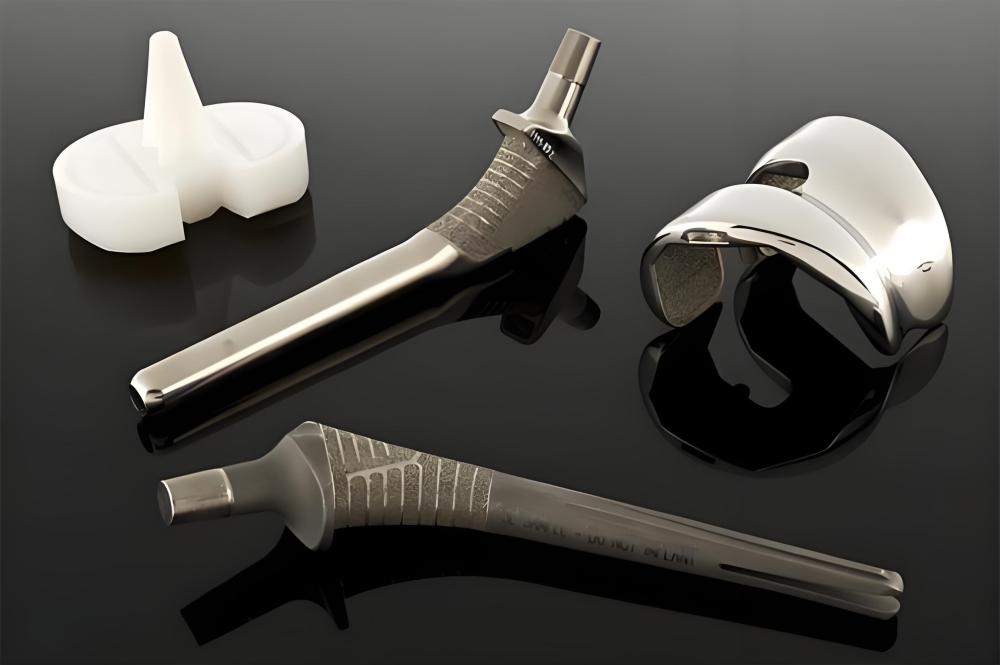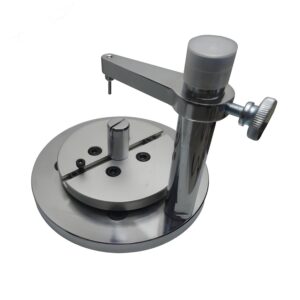What is Grade 5 Titanium?
Grade 5 titanium, often referred to as Ti-6Al-4V, is the most widely used titanium alloy in the world. It’s an alpha-beta alloy, meaning it combines the benefits of both alpha and beta phases of titanium, resulting in a material that’s strong, durable, and adaptable. This alloy is composed primarily of titanium, with specific additions of aluminum and vanadium, which enhance its performance for demanding applications.
The popularity of Grade 5 titanium stems from its ability to balance strength, weight, and corrosion resistance. It’s a go-to material for industries that require high-performance components, such as aerospace, automotive, and medical device manufacturing. Its versatility also makes it a staple in precision machining, where intricate parts must withstand extreme conditions without compromising reliability.
Why is it Called Grade 5?
The term “Grade 5” comes from the ASTM (American Society for Testing and Materials) classification system, which categorizes titanium and its alloys based on their chemical composition and mechanical properties. Grade 5 is distinguished by its specific alloying elements and exceptional performance, making it a standout in the titanium family. Its widespread use has earned it nicknames like “the workhorse of titanium alloys” among engineers and machinists.
Chemical Composition of Grade 5 Titanium
The unique properties of Grade 5 titanium are largely due to its carefully engineered chemical makeup. The alloy’s primary components include:
- Titanium (Ti): Approximately 88-90% of the alloy, serving as the base material.
- Aluminum (Al): 5.5-6.75%, which enhances strength and heat resistance.
- Vanadium (V): 3.5-4.5%, improving toughness and formability.
- Trace Elements: Small amounts of iron (Fe), oxygen (O), carbon (C), nitrogen (N), and hydrogen (H), typically less than 0.5% each, to fine-tune the alloy’s properties.
This precise combination gives Grade 5 titanium its signature strength-to-weight ratio and corrosion resistance, making it ideal for applications where reliability is critical. The aluminum and vanadium additions stabilize the alloy’s microstructure, allowing it to perform well under high stress and temperature variations.
How Composition Affects Performance
The inclusion of aluminum strengthens the alloy by forming a stable oxide layer, which enhances corrosion resistance. Vanadium, on the other hand, improves the alloy’s ability to be worked and shaped without cracking. Together, these elements create a material that’s not only robust but also versatile enough for complex machining processes. The trace elements are carefully controlled to prevent brittleness or other undesirable traits, ensuring the alloy meets strict industry standards.
Properties of Grade 5 Titanium
Grade 5 titanium’s properties make it a standout choice for a wide range of applications. These properties can be divided into physical and mechanical categories, each contributing to the alloy’s reputation as a high-performance material.
Physical Properties of Grade 5 Titanium
The physical characteristics of Grade 5 titanium play a significant role in its widespread use. Key physical properties include:
- Density: Approximately 4.43 g/cm³, making it significantly lighter than steel (around 7.8 g/cm³) while maintaining comparable strength.
- Melting Point: Around 1,650°C (3,000°F), allowing it to withstand high temperatures without deforming.
- Thermal Conductivity: Relatively low at 6.7 W/m·K, which means it conducts heat slowly, a benefit in applications requiring thermal stability.
- Corrosion Resistance: Exceptional resistance to saltwater, acids, and other corrosive environments due to its protective oxide layer.
These properties make Grade 5 titanium ideal for environments where weight savings and durability are paramount, such as in aircraft components or marine equipment.
Mechanical Properties of Grade 5 Titanium
The mechanical properties of Grade 5 titanium are what truly set it apart in high-stress applications. These include:
- Tensile Strength: Typically ranges from 900-1,000 MPa (130-145 ksi), comparable to high-strength steels but at a fraction of the weight.
- Yield Strength: Around 830-910 MPa (120-130 ksi), indicating its ability to resist deformation under load.
- Elongation: Approximately 10-15%, allowing for some ductility and flexibility in machining.
- Hardness: Typically 36 HRC (Rockwell C scale), making it tough but still machinable with the right tools.
- Fatigue Resistance: Excellent, enabling it to endure repeated stress cycles without failure.
These mechanical attributes make Grade 5 titanium a top choice for components that must endure extreme forces, such as turbine blades, orthopedic implants, and high-performance automotive parts.
Applications of Grade 5 Titanium

The versatility of Grade 5 titanium has led to its adoption across a wide range of industries. Its ability to perform in challenging environments makes it indispensable for applications requiring precision, strength, and reliability.
Aerospace Industry
In aerospace, Grade 5 titanium is a cornerstone material. It’s used in aircraft frames, engine components, landing gear, and fasteners due to its high strength-to-weight ratio and resistance to temperature extremes. For example, jet engine compressor blades often rely on this alloy to withstand intense heat and stress while keeping the aircraft lightweight.
Medical Devices
The biocompatibility of Grade 5 titanium makes it a top choice for medical implants, such as hip replacements, dental implants, and spinal fixation devices. Its corrosion resistance ensures it won’t degrade in the body, while its strength supports long-term reliability. Additionally, its non-magnetic properties make it safe for use in MRI machines.
Automotive and Motorsport
In the automotive world, particularly in high-performance and racing vehicles, Grade 5 titanium is used for components like connecting rods, valves, and exhaust systems. Its lightweight nature improves fuel efficiency and speed, while its durability ensures parts can handle the rigors of high-speed racing.
Marine Applications
The alloy’s resistance to saltwater corrosion makes it ideal for marine applications, including propeller shafts, hull fittings, and underwater fasteners. It’s a favorite in shipbuilding and offshore industries where exposure to harsh environments is constant.
Industrial and Consumer Products
Beyond specialized industries, Grade 5 titanium appears in everyday products like sports equipment (e.g., golf clubs, bicycle frames), jewelry, and high-end knives. Its combination of aesthetics, durability, and lightweight properties appeals to manufacturers and consumers alike.
Advantages and Disadvantages of Grade 5 Titanium
Like any material, Grade 5 titanium has its strengths and limitations. Understanding these can help industries make informed decisions about when and how to use it.
Advantages of Grade 5 Titanium
- High Strength-to-Weight Ratio: Offers steel-like strength at roughly half the weight, ideal for weight-sensitive applications.
- Corrosion Resistance: Resists degradation in harsh environments, extending component lifespan.
- Biocompatibility: Safe for medical implants, with minimal risk of rejection or allergic reactions.
- Temperature Resistance: Performs well in both high and low temperatures, making it versatile for extreme conditions.
- Machinability: While challenging, it can be machined with precision using advanced tools and techniques, allowing for complex designs.
These advantages make Grade 5 titanium a preferred material in industries where performance and reliability are non-negotiable.
Disadvantages of Grade 5 Titanium
- High Cost: Titanium alloys are expensive to produce and process, which can increase project costs.
- Machining Challenges: Its toughness and low thermal conductivity make it harder to machine than softer metals like aluminum, requiring specialized tools and expertise.
- Limited Availability: Compared to steel or aluminum, titanium is less abundant, which can lead to supply chain constraints.
- Welding Complexity: Welding Grade 5 titanium requires precise conditions to avoid contamination, adding complexity to manufacturing.
Despite these drawbacks, the benefits of Grade 5 titanium often outweigh the challenges, especially in applications where performance is critical.
Why Grade 5 Titanium Matters in Machining
In the world of precision machining, Grade 5 titanium is both a challenge and an opportunity. Its toughness demands advanced tools, such as carbide or diamond-coated cutters, and careful control of cutting speeds to prevent overheating. However, the results are worth the effort. Machined components made from Grade 5 titanium offer unmatched durability and performance, making them ideal for industries where failure is not an option.
Machinists working with this alloy must account for its unique properties, such as its tendency to work-harden during cutting. By using proper techniques, like low cutting speeds and high-pressure coolant, manufacturers can produce intricate parts with tight tolerances. The alloy’s versatility also allows for a range of finishes, from polished medical implants to matte-finished aerospace components.
Tips for Machining Grade 5 Titanium
- Use Sharp Tools: Dull tools increase heat and wear, leading to poor surface finishes.
- Control Heat: Low thermal conductivity means heat builds up quickly; use ample coolant to dissipate it.
- Optimize Feeds and Speeds: Slow speeds and high feed rates help prevent work-hardening.
- Choose the Right Equipment: High-torque machines with rigid setups are essential for precision.
These strategies ensure that Grade 5 titanium’s potential is fully realized in the machining process, delivering components that meet the highest standards.
The Future of Grade 5 Titanium
As industries continue to push the boundaries of performance, Grade 5 titanium is likely to remain a key player. Advances in machining technology, such as additive manufacturing (3D printing) and improved cutting tools, are making it easier to work with this alloy, potentially reducing costs and expanding its applications. Additionally, ongoing research into titanium recycling could address supply concerns, making the material more accessible.
Emerging fields like renewable energy and space exploration are also driving demand for Grade 5 titanium. For example, its use in lightweight wind turbine components and spacecraft structures highlights its role in sustainable and cutting-edge technologies. As these industries grow, so too will the reliance on this remarkable alloy.
Why Choose Precionn for Your Titanium Needs?
At Precionn, we specialize in precision machining and offer high-quality Grade 5 Titanium products tailored to meet the demands of various industries. Whether you’re in aerospace, medical, automotive, or marine applications, we understand the importance of high-performance materials. Our advanced machining processes and experienced team ensure that every product meets your exact specifications, helping you achieve superior results.
For more information on how Precionn can support your project with Grade 5 Titanium, don’t hesitate to reach out to us. Let us help you take your designs to the next level with top-tier titanium solutions.




